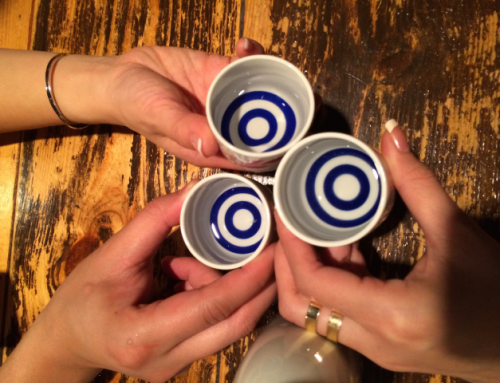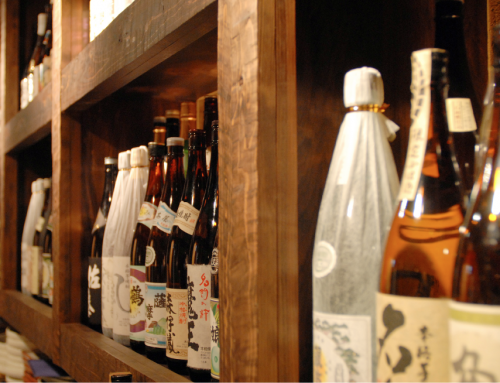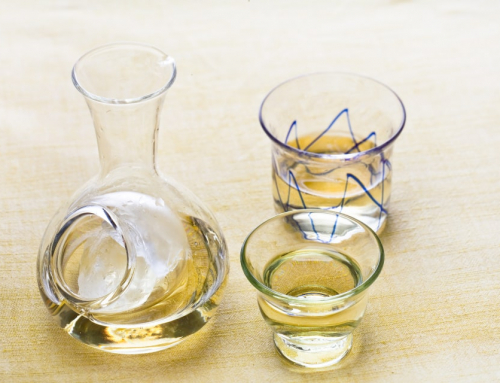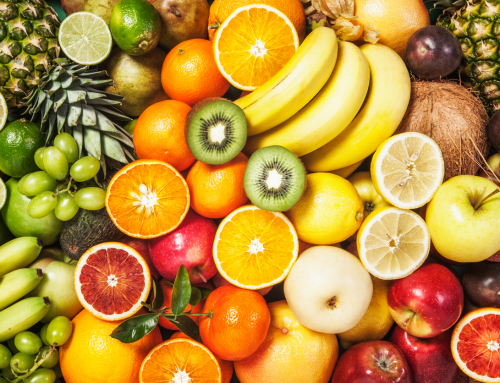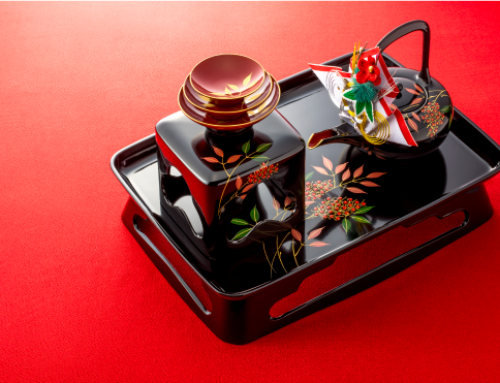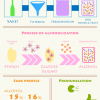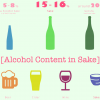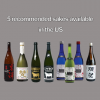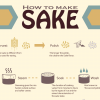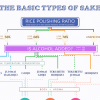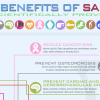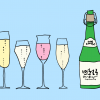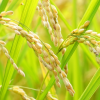Contents
Despite the beautiful taste of Sake, you may want to cut down because of Sake calories. Some believe that calories in Sake are higher than those in other alcoholic beverages. Why? Because Sake is made of rice – a symbol of carbohydrate.
But is it really true? Here we have prepared the complete guide to Sake calories!
Sake Calories vs Other Alcoholic Beverages
Many websites and books compare calories in alcoholic beverages in ‘one glass’. But they compare 330ml beer with 250ml wine or a pint of beer with 150ml wine. And it confused me!
Because we don’t drink Sake or wine as much as beer, right? Simply it’s because the alcohol content is different. Standard beer is around 5% and Sake is 15-16%. A pint of beer will definitely make us less drunk than that of Sake will.
Also, those glass sizes vary with websites and books. Some use a 150ml (5 oz) wine glass, whereas others use a 175ml (6 oz) one…
That’s why we have done all the calculations and compared Sake calories with other beverages for the same 20g alcohol volume (or standard drinks). Theoretically, they make us drunk as much.
So here we go!
- Sake: 187 Calories
- Beer: 203 Calories
- Wine: 162 Calories
- Umeshu (Plum Wine): 280 Calories
- Shochu: 131 Calories
- Whiskey: 128 Calories
* Sake: abv 15%, Beer: abv 5% lager, Wine: abv 12% red, Umeshu: abv 13.5%, Sochu: 25%, Whiskey: abv 40% 80 proof
Calories in alcohol can be divided into alcohol calories and sugar (carbs) calories:
- Alcohol has 7 calories per gram.
- Sugar has 4 calories per gram.
As they have the same 20g alcohol volume, the differences depend on their sugar level.
It makes sense that the sweet Umeshu has the highest calories!
Sake Calories in Different Types of Sake
We’ve collected and summarized the statistical information from Japan National Tax Agency:
- Ginjo Type: 187 Calories (inc. Ginjo, Daiginjo, Junmai Ginjo, Junmai Daiginjo)
- Junmai Type: 185 Calories (inc. Junmai Shu, Tokubetsu Junmai)
- Honjozo Type: 193 Calories (inc. Honjozo Shu, Tokubetsu Honjozo)
- Nigori Sake: 209 Calories
- Genshu: 239 Calories (alcohol content = 20%)
- Futsu-shu: 196 Calories (Cheap Sake)
Genshu has the highest calories because its alcohol content is higher than other types of Sake.
Facts about Sake Calories
1. The sweeter the Sake, the more Sake calories.
Because there are more calories from sugar. Technically, the sugar level of Sake can be found by Sake Meter Value (Nihonshudo). A larger value of SMV means more calories in Sake.
2. The higher the alcohol content, the more Sake calories (per ml/oz).
The alcohol content in Sake is 15-16%, so no big difference. But Genshu (undiluted Sake) has higher calories as it has 20% alcohol content.
3. Alcohol can slow down burning fat from food.
Alcohol is empty calories. It means that calories from alcohol are burned once you drink Sake. In the meantime, burning fat from food is put away.
4. Drinking increases the temptation for fattening food.
When you’re drunk, you crave for fatty food like hot chips and snacks. Calories in these types of food tend to be much larger than Sake calories!
Solutions: How to Cope with Sake Calories
So how should we drink Sake without getting fat?
1. Opt for Low-calorie Food
Sometimes Sake calories are not the main culprit. Food that you eat along with Sake may have many calories. Choose healthier food like Salad, Sashimi, Tofu, etc.
2. Avoid Drinking on Empty Stomach
Drinking on empty stomach will quickly make you drunk. When you’re drunk, you’re less rational and vulnerable to a craving for fattening food.
3. Opt for Hot Sake
A cold drink will lower your metabolism, and fat is more likely to be stored in your body. Maybe drink hot Sake if you’re health conscious?
If you’re health/body conscious, it’s best to follow those 3 suggestions as well as your daily guideline. The daily guideline in our infographic is for Japanese drinkers. Check out your country’s as it may vary with countries.
Drink Sake healthily!
References (1-4 English, 5-12 Japanese)
- http://rethinkingdrinking.niaaa.nih.gov/toolsresources/caloriecalculator.asp
- http://www.nhs.uk/Livewell/alcohol/Pages/calories-in-alcohol.aspx
- https://www.benenden.co.uk/healthier-you/christmas-health/how-to-measure-your-alcohol-units/
- https://www.drinkaware.co.uk/check-the-facts/health-effects-of-alcohol/appearance/calories-infographic
- http://fooddb.mext.go.jp/result/result_top.pl?USER_ID=13134
- http://www.nrib.go.jp/sake/sakefaq01.htm
- http://nribjyo.nrib.go.jp:3000/tools/tools/extract
- http://www.nomooo.jp/blog/?p=7691
- http://www.bic-osake.com/mame/mame/seisyu4.shtml
- http://www.eiyoukeisan.com/calorie/gramphoto/nomimono/nihonsyu.html
- http://fooddb.mext.go.jp/result/result_top.pl?USER_ID=13155
- http://fooddb.mext.go.jp/result/result_top.pl?USER_ID=13161
- http://www.sapporobeer.jp/tekisei/kenkou/susume.html


